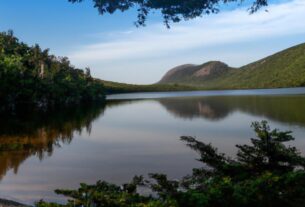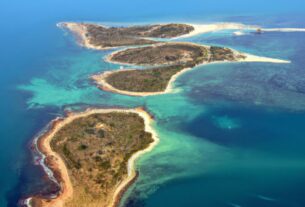Every year, a mesmerizing natural event captivates the hearts of those on Christmas Island, a quaint Australian territory in the Indian Ocean. Millions of red crabs, indigenous to this island, commence an incredible migration from the lush forests to the coastline, where they engage in their mating rituals and spawn. This awe-inspiring phenomenon is famously known as the Red Crab March and ranks among the most astonishing natural spectacles on Earth.
The Phenomenon of the Red Crab Migration
Unfolding during the rainy season, the Red Crab Migration is a phenomenon unique to Christmas Island. Triggered by the onset of the wet season, which usually falls between late October and early November, this migration is a sight to behold. During this period, the crabs emerge from their burrows within the forest and embark on a journey towards the coast where they mate and spawn.
The sheer magnitude of this migration is mind-boggling, with millions of red crabs traversing the island. In unison, they form a vibrant, meandering river of crimson hues as they make their way towards the coastline. Although the journey poses numerous perils, such as predators and the risk of being crushed by passing vehicles, the determination and resilience of these crabs prevail. The majority of them successfully reach the coast to complete their crucial reproductive cycle.
The Treasures of Christmas Island’s Ecosystem
Nestled in the Indian Ocean about 360 kilometers south of Jakarta, Indonesia, lies Christmas Island—an Australian territory renowned for its mesmerizing ecosystem. This island boasts dense tropical rainforests, dramatic limestone cliffs, and a rugged coastline, all serving as a habitat for a diverse range of flora and fauna.
The red crabs hold a pivotal role within this delicate ecosystem. Their contribution to the island’s nutrient cycle is invaluable. Feeding on leaf litter and organic matter within the forest, the crabs effectively break them down into smaller particles, enriching the soil. This process nurtures the health and fertility of the forest, attracting a variety of plant and animal species to thrive in this bountiful environment.
Besides the red crabs, Christmas Island is home to a plethora of remarkable wildlife. Birds, reptiles, and insects gracefully coexist within this ecological wonderland. The island proudly boasts notable species such as the Christmas Island frigatebird, the Christmas Island hawk-owl, and the giant robber crab.
The Cultural Significance of the Red Crab March
The Red Crab March transcends its status as a natural phenomenon and holds immense cultural significance for the people of Christmas Island. This event is deeply-rooted in tradition and has been celebrated for generations.
According to local legends, the red crabs are revered as the sacred guardians of the island, blessed with mystical powers. The crabs are cherished and treated with utmost respect, never to be consumed or harmed in any manner.
Today, the Red Crab March is celebrated with great pomp and splendor. Locals and visitors alike partake in a plethora of activities and events. Guided tours of the island unravel the crabs’ enchanting journey, while photography competitions capture the essence of this magnificent spectacle. Cultural performances manifest the island’s unique traditions and customs, enchanting all who witness them. This celebration not only bolsters the island’s tourism industry but also promotes awareness of its extraordinary ecosystem, fostering a sense of responsibility for its conservation.
Experience the Red Crab March for yourself, and be captivated by this breathtaking phenomenon. Join TooLacks on this incredible journey by visiting TooLacks, where nature’s wonders come alive in vivid detail.


